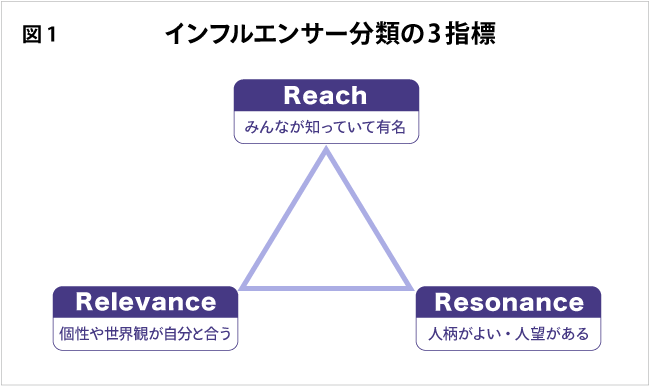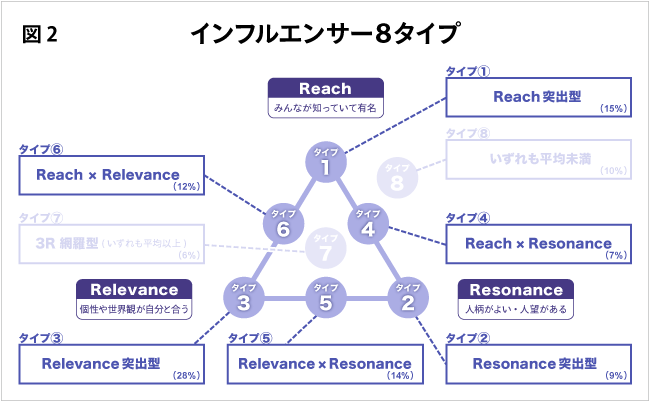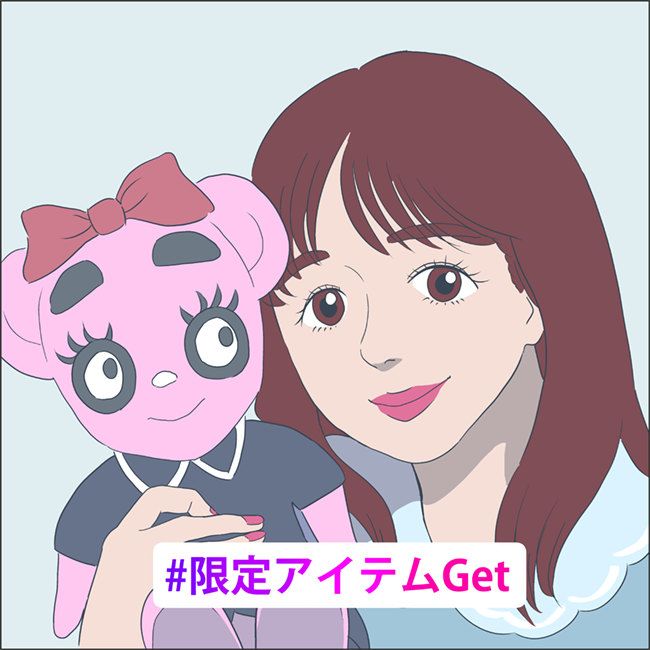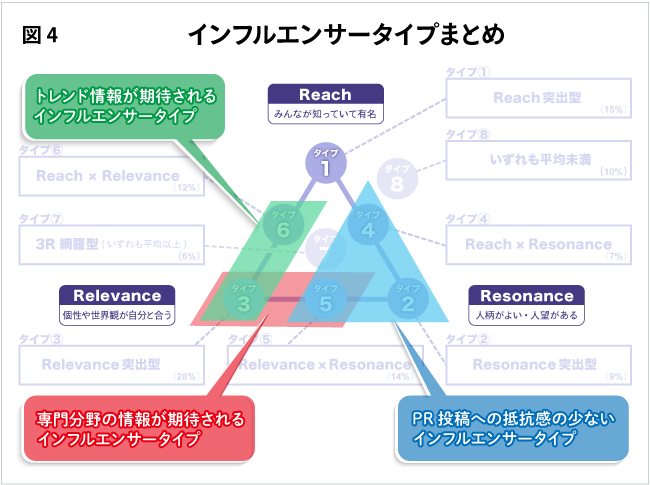Searching for influencer marketing reveals various classifications of influencer types.
For example, classifications like "Mega Influencer" and "Micro Influencer" categorize influence based on follower count. This essentially treats influencers as media outlets, serving as a quantitative gauge of their reach potential.
You also frequently see classifications like "niche-focused," "opinion-based," "celebrity-type," and "creator-type," based on content focus or personal attributes. This approach treats influencers as content, providing qualitative criteria for assessing compatibility with your brand.
While these classifications offer valuable insights, they present several challenges.
Among these influencers, which type holds the greatest influence over purchasing behavior? If leveraging influencers for marketing, understanding how these differences in type actually impact purchasing behavior could enable more practical selection .
To investigate whether it's the influencer's scale as a "media" platform, their "content," or both that influences purchasing behavior, we established three metrics beginning with the letter R.
The first is "Reach" (reach). This measures how "well-known and famous" the influencer is to the general public. The second is "Relevance" (relevance), which assesses whether "their worldview aligns with mine." The third is "Resonance" (resonance), which measures the degree to which they are "personable/well-liked."
The aforementioned "media" perspective is captured by "Reach," while the "content" perspective is evaluated by either "Relevance" (i.e., the appeal of the post content) or "Resonance" (i.e., the appeal of the creator themselves).
This 3R evaluation is conducted from the perspective of "influencer fans"*. If the goal is to move people through influencers, linking fans' actual evaluations to their impact on purchasing behavior provides a more accurate grasp of reality.
*Conditions for the "influencer fans" surveyed
・Views at least one major SNS platform once a day
・Recognizes the term "influencer" (beyond just the word, at a level of "vaguely understanding the concept")
・Views an influencer's page or videos at least once a week
・Have shown interest in products or services introduced by an "influencer" ( )
Characteristics of the 6 Influencer Types
After compiling the responses, we were able to categorize various influencers into eight distinct types.
Here we explain the characteristics of the six main types. While specific influencer names are omitted, try imagining which type your favorite influencer might be.
Type ①
Outstanding Reach Type: 15% of Respondents

Illustration: Taichi Nishimura (Dentsu Inc.)
These are influencers with millions of channel subscribers. Their content often features "try it out" style posts aimed at young audiences. Collaborations between influencers of the same type to further expand their reach are also frequently seen.
Type ②
Resonance-Driven Type: 9% of total
These influencers are characterized by unfiltered, down-to-earth posts showcasing their authentic selves—covering personal life, family, friends, dialects, etc. Their unpretentious, genuine approach radiates warmth and sincerity, attracting followers.
Type ③
Relevance-focused Type: 28%
These influencers specialize in fields like fashion, makeup, or gaming. Some even serve as opinion leaders within their niche. They lead their followers with unique sensibilities and expertise honed by their strengths.
Type ④
Reach × Resonance Type: 7%
This type includes celebrities from mass media, individuals who gained fame through video posting, and a mix of both. They are characterized by rich emotional expression and a conversational style accessible even to children. This category also includes major influencers with follower counts comparable to Type ①.
Type ⑤
Relevance × Resonance Type: 14%
Posts often focus on unique specialized themes like home appliances, hair and makeup, or studying. Similar to Type ②, but characterized by a greater sense of familiarity, often involving family or friends.
Type ⑥
Reach × Relevance Type: 12%
Features many celebrities and quirky influencers. Characterized by their role as trend leaders and a sense of contrast (e.g., balancing their main career with family life, or blending fashion sense with geeky interests). It's not just expertise, but their strong personalities that captivate people.
Influence on Purchasing Behavior by Type
Now, let's examine these six types and their impact on purchasing behavior.
The red-lined sections indicate responses to questions about whether influencer posts prompt purchasing actions. These questions assess influence along the funnel: interest → research → purchase. The numbers represent the percentage of respondents who answered affirmatively. Areas with particularly high responses are highlighted with red hatching.
As you can see, Types ④, ⑤, and ⑥ show high values across all questions. Compared to the Standout type, the "Combination type"—where any two of the elements "Reach," "Relevance," and "Resonance" are combined—demonstrates stronger influence on purchasing behavior.
Next, the blue box shows responses to questions about resistance to corporate PR posts. Lower numbers indicate fans are less bothered by posts being PR. These are highlighted in blue.
Here, Type ② "Resonance Dominant" shows the least resistance at 16.2%. Following this, "composite types" like Types ④ and ⑤, which involve both " " and "Resonance," also exhibit low resistance.
Influencers: Character over Reach
Based on the above analysis, the characteristics of each type can be summarized as shown in Figure 4.
Types ③ and ⑥ (green) are influencer types expected to provide trend information. Types ③ and ⑤ (red) are influencer types expected to provide specialized field information. Types ②, ④, and ⑤ are influencer types valued more for their personality than their posts, showing low resistance to PR posts.
What I want to highlight is the depth of marketing potential in the "Resonance"-type influencers (Types ②④⑤).
The presence of "Resonance" elements positively impacts both their influence on purchasing behavior and the reduction of resistance to PR posts.
"Resonance"-type influencers attract deeply engaged followers who are fans of their personality. Even if a PR post differs from their usual content, these followers are unlikely to be easily disappointed, exhibiting a certain resilience.
Conversely, while "Relevance"-type influencers have clearly defined follower interests and are easier to target, high effectiveness is unlikely if the company's PR post doesn't align with follower expectations. Careful operational handling seems necessary.
Looking at influencers from a marketing perspective—specifically their influence on purchasing behavior and their followers' resistance to PR posts—yields an unexpected conclusion.
When companies select influencers, it seems crucial to focus on how fans evaluate the influencer's personality.
[Survey Overview]
Survey Period: December 2017 - February 2018
Research Firm: Dentsu Macromill Insight, Inc.
Survey Method: Internet quantitative survey (conducted December 2017)
Sample Composition: 1,600 men and women aged 15–49 nationwide













